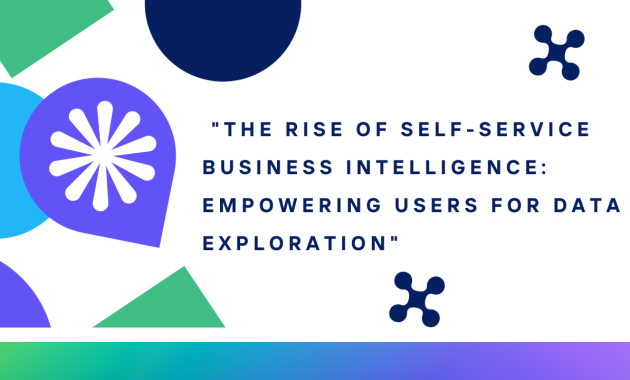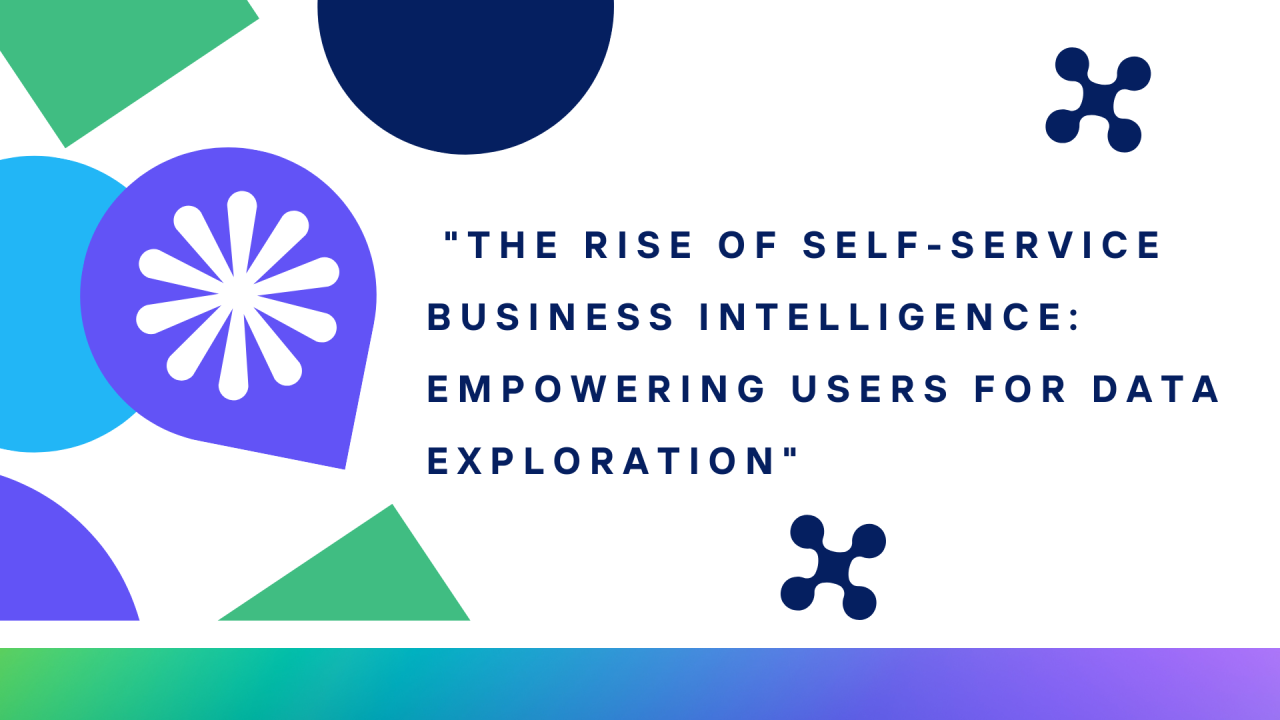
Self-Service Business Intelligence Software: The Future of Data Analysis
In today’s data-driven world, businesses are awash in information. However, the true power lies not in the volume of data, but in the ability to understand and leverage it. This is where self-service business intelligence (BI) software steps in, offering a transformative approach to data analysis. This software empowers users, regardless of their technical expertise, to explore, analyze, and visualize data, ultimately leading to better decision-making and improved business outcomes. This article delves into the core aspects of self-service business intelligence software, exploring its benefits, key features, and the impact it’s having on organizations across various industries.
Democratizing Data Access
Traditionally, data analysis was the domain of specialized IT departments or highly trained data scientists. This created bottlenecks, limiting access to crucial insights and slowing down the decision-making process. Self-service business intelligence software breaks down these barriers by providing user-friendly interfaces and intuitive tools that allow anyone within an organization to access, analyze, and interpret data. This democratization of data empowers employees at all levels to make data-driven decisions, fostering a culture of informed decision-making.
The core principle behind self-service business intelligence software is accessibility. The software provides a simplified interface, often incorporating drag-and-drop functionality and pre-built templates, allowing users to create reports and dashboards without needing to write complex code or understand intricate data structures. This accessibility is crucial for enabling non-technical users to explore data and extract valuable insights.
Key Features of Self-Service BI Software
Self-service business intelligence software offers a range of features designed to empower users and streamline the data analysis process. Some of the most important features include:
- Data Integration: The ability to connect to various data sources, including databases, spreadsheets, cloud services, and more. This integration allows users to consolidate data from disparate sources into a single, unified view.
- Data Preparation: Tools for cleaning, transforming, and preparing data for analysis. This includes features such as data cleansing, data type conversion, and the creation of calculated fields.
- Data Visualization: A wide array of visualization options, such as charts, graphs, and maps, to represent data in a clear and understandable format. Effective visualizations are crucial for communicating insights and identifying trends.
- Interactive Dashboards: Customizable dashboards that provide a real-time overview of key performance indicators (KPIs) and other important metrics. Dashboards allow users to monitor performance, track progress, and identify areas for improvement.
- Reporting and Analysis: Features for creating and sharing reports, as well as tools for performing advanced analysis, such as trend analysis, forecasting, and what-if scenarios.
- Collaboration and Sharing: Capabilities for sharing reports, dashboards, and insights with colleagues, fostering collaboration and ensuring that everyone has access to the same information.
Benefits of Implementing Self-Service BI
The adoption of self-service business intelligence software brings a host of benefits to organizations, including:
- Faster Decision-Making: By providing quick access to data and insights, self-service business intelligence software accelerates the decision-making process.
- Improved Efficiency: Automating data analysis tasks and reducing reliance on IT departments frees up valuable time and resources.
- Increased Data Literacy: Empowering employees with data analysis tools fosters a culture of data literacy throughout the organization.
- Enhanced Collaboration: Sharing data and insights across teams promotes collaboration and alignment.
- Better Business Outcomes: By enabling data-driven decision-making, self-service business intelligence software can lead to improved profitability, increased revenue, and enhanced customer satisfaction.
Choosing the Right Self-Service BI Software
Selecting the right self-service business intelligence software for an organization requires careful consideration of several factors. These include:
- Ease of Use: The software should be intuitive and easy to learn, with a user-friendly interface that allows non-technical users to quickly get up to speed.
- Data Connectivity: The software should be able to connect to all relevant data sources, including databases, cloud services, and spreadsheets.
- Data Visualization Capabilities: The software should offer a wide range of visualization options to effectively communicate insights.
- Reporting and Analysis Features: The software should provide robust reporting and analysis capabilities to meet the organization’s specific needs.
- Scalability: The software should be able to scale to accommodate the organization’s growing data volumes and user base.
- Security: The software should offer robust security features to protect sensitive data.
- Cost: The software’s pricing model should be competitive and align with the organization’s budget.
Real-World Applications of Self-Service BI
Self-service business intelligence software is transforming how businesses operate across various industries. Here are a few examples:
- Retail: Retailers use self-service business intelligence software to analyze sales data, track inventory levels, and optimize pricing strategies. They can identify trends in customer behavior and personalize marketing campaigns.
- Healthcare: Healthcare providers use self-service business intelligence software to track patient outcomes, manage resources, and improve operational efficiency. They can also analyze data to identify areas for improvement in patient care.
- Finance: Financial institutions use self-service business intelligence software to analyze financial performance, manage risk, and detect fraud. They can track key financial metrics and make informed investment decisions.
- Manufacturing: Manufacturers use self-service business intelligence software to optimize production processes, track inventory levels, and improve supply chain management. They can also analyze data to identify areas for improvement in product quality.
- Marketing: Marketers use self-service business intelligence software to analyze marketing campaign performance, track website traffic, and understand customer behavior. They can also identify areas for improvement in marketing strategies.
Challenges and Considerations
While self-service business intelligence software offers significant advantages, organizations should be aware of potential challenges. These include:
- Data Governance: Establishing clear data governance policies to ensure data accuracy, consistency, and security is crucial.
- Data Literacy Training: Providing adequate training to users to ensure they can effectively use the software and interpret data.
- Data Quality: Ensuring data quality is paramount. The software is only as good as the data it analyzes.
- User Adoption: Encouraging user adoption and fostering a culture of data-driven decision-making.
- Security Concerns: Addressing security concerns and ensuring data privacy.
The Future of Self-Service BI
The future of self-service business intelligence software is bright. As technology continues to evolve, we can expect to see even more sophisticated features and capabilities. Key trends include:
- Artificial Intelligence (AI) and Machine Learning (ML) Integration: AI and ML are being integrated into self-service business intelligence software to automate tasks, provide predictive analytics, and generate insights.
- Enhanced Data Visualization: More sophisticated visualization tools and techniques are emerging to help users understand complex data sets.
- Mobile BI: The ability to access and analyze data on mobile devices is becoming increasingly important.
- Cloud-Based BI: Cloud-based self-service business intelligence software is becoming more popular due to its scalability, cost-effectiveness, and ease of deployment.
The ability to quickly access and analyze data is becoming increasingly important for organizations to remain competitive. Self-service business intelligence software is a powerful tool that enables organizations to make data-driven decisions. It empowers employees, improves efficiency, and fosters a culture of data literacy. By carefully selecting and implementing the right self-service business intelligence software, organizations can unlock the full potential of their data and achieve significant business outcomes.
In conclusion, self-service business intelligence software is not just a trend; it’s a paradigm shift in how businesses approach data analysis. It offers a powerful and accessible way for organizations to leverage their data, leading to improved decision-making, enhanced efficiency, and better business outcomes. Embracing self-service business intelligence software is no longer a luxury; it’s a necessity for organizations that want to thrive in today’s data-driven landscape.
[See also: Data Visualization Best Practices, The Role of BI in Digital Transformation, Choosing the Right BI Tool]

